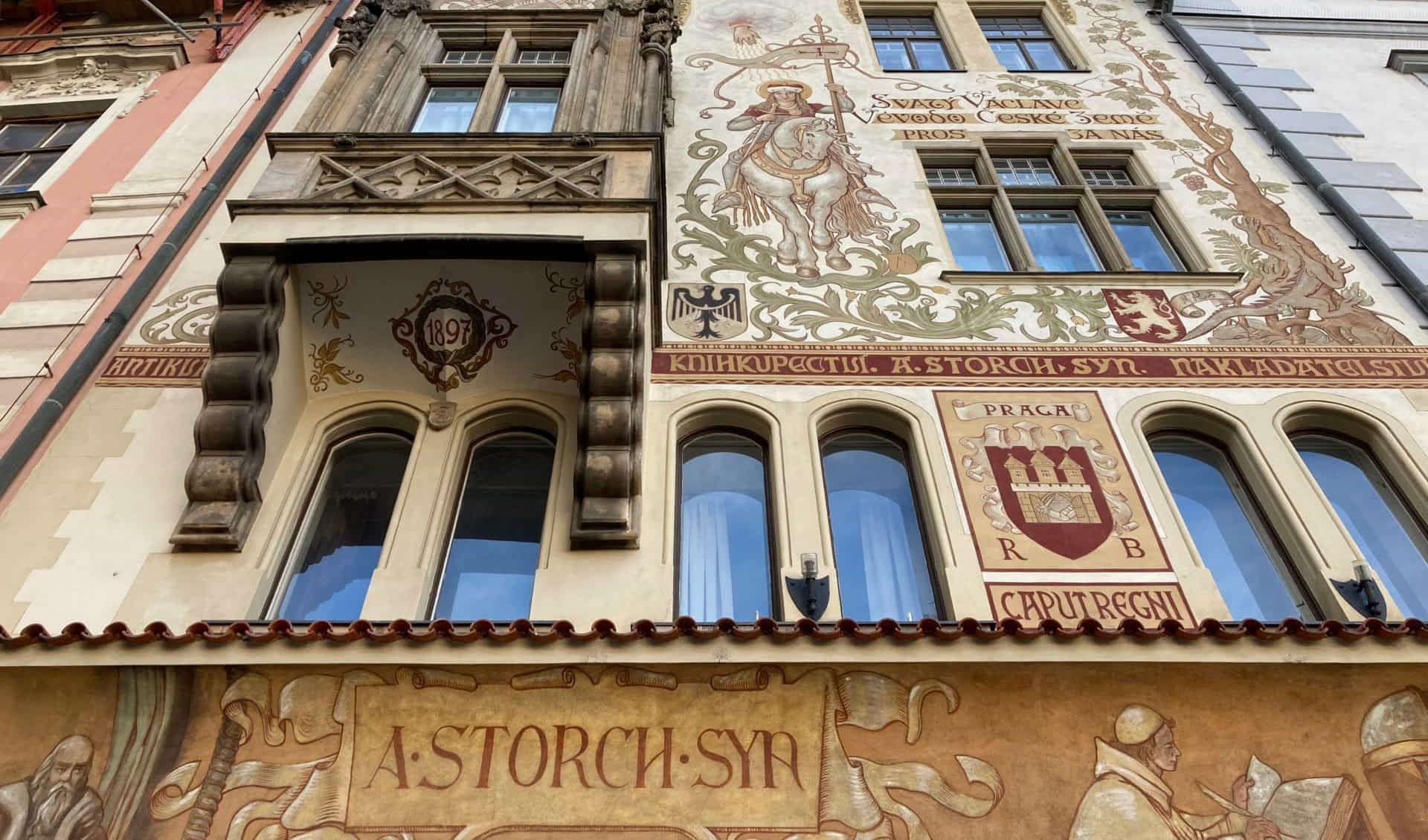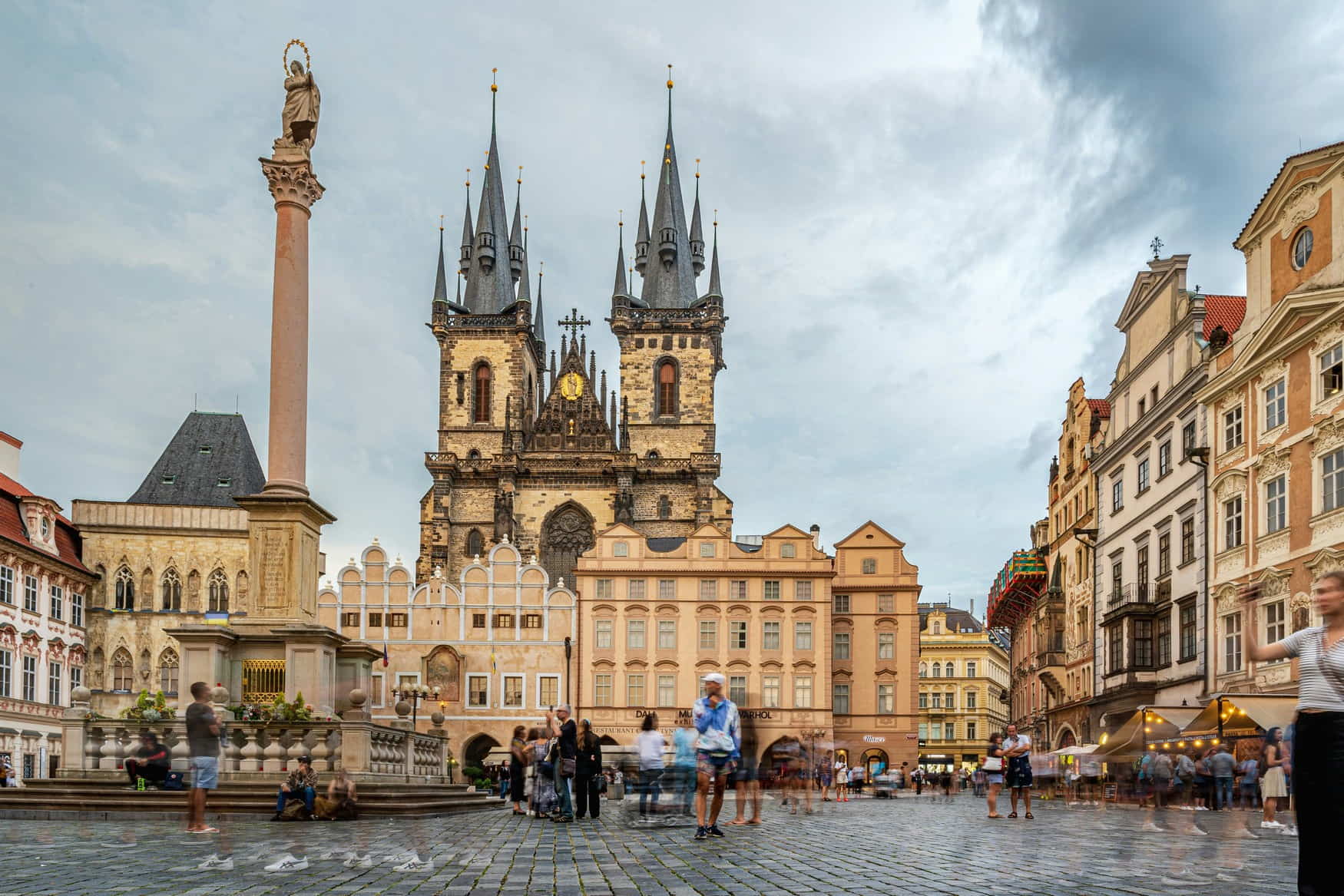Walking along Celetna Street to the Old Town Square in Prague, you may notice the beautifully painted building. The Storch House, an architectural marvel, captures the Czech capital's imagination and rich history. This vibrant piece of heritage, also known as "At the Stone Virgin Mary," is distinguished by its beautifully adorned façade, which showcases a mural of St. Wenceslas on horseback, a tribute to the Duke of Bohemia and the nation's patron saint.
The intricacies of the Storch House extend beyond its stunning exterior, with tales of its past, captivating visitors of all ages. Constructed in the late 19th century, this house replaced earlier structures and is celebrated for its unique blend of Gothic elements and Renaissance-style murals. A site of continuous rejuvenation, the building's resilience is exemplified by its restoration following damage incurred during the Prague Uprising 1945. Now, it stands as a vibrant gateway to the past, appealing to families eager to immerse themselves in the authentic splendor of Prague’s historical treasures.
Contents
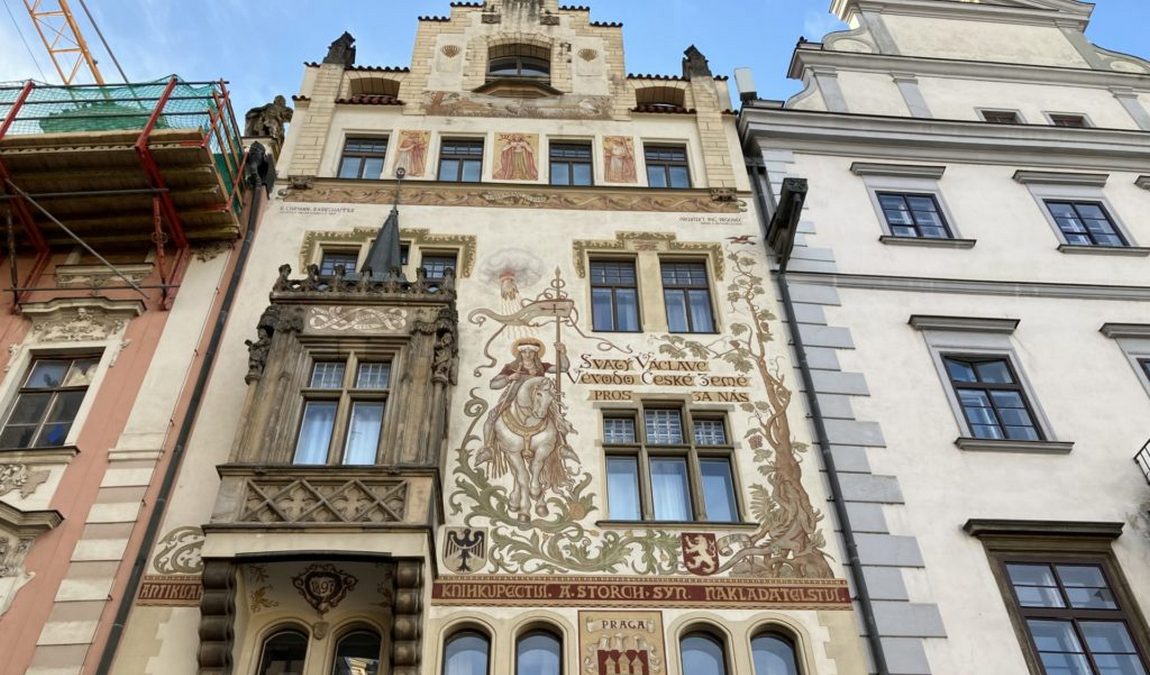 Photo: ourbeautifulprague.com
Photo: ourbeautifulprague.com
Venturing inside the Storch House is a journey through time, where every corner reveals secrets of ancient Prague. With its central location on one of the city's most significant squares, families find themselves perfectly positioned to explore the surrounding cobbled streets that hold centuries of stories, from the Astronomical Clock to the gothic spires of the Týn Church. Visiting this remarkable landmark allows parents and children to experience a vivid slice of Czech culture, artistry, and history woven together in an unforgettable tapestry.
Why It Might Be Interesting for Kids
The Storch House, with its vibrant façade, offers an enchanting spectacle that appeals to the whimsy of children. Situated in the heart of Prague's Old Town Square, this historical gem is a visual treat with elements that captivate young, imaginative minds. Here are some reasons why the Storch House is worth visiting with kids:
1. Historical Fairytale Imagery: The exterior of Štorchův dům is adorned with a fresco of Saint Wenceslas (the patron of Bohemia) on horseback, a noble figure from Bohemian folklore. Mikolas Ales designed it in the 19th century. Children often find themselves mesmerized by the colorful art that brings a taste of Czech legend to life.
2. An Architectural Adventure: Kids with a penchant for stories will find that the house's Neo-Renaissance architecture resembles a storybook scene. Encouraging them to look up from their gadgets, the building is a canvas showcasing the skilled portrayal of Prague's history.
3. Engaging Learning Experience: For curious minds, the house's façade piques interest in local culture and history, fostering educational dialogue with parents. It’s particularly interesting for children aged 6-12, who are at an age where they can appreciate the fusion of art and history.
Why specifically will children be interested? They will find themselves drawn to the larger-than-life figures and vivid colors. It's a fantastic opportunity to spark a love for history, art, and architecture within a casual stroll. The Storch House gives a sense of adventure, turning an ordinary city tour into a journey through time ripe with imagination and wonder.
Historical Context
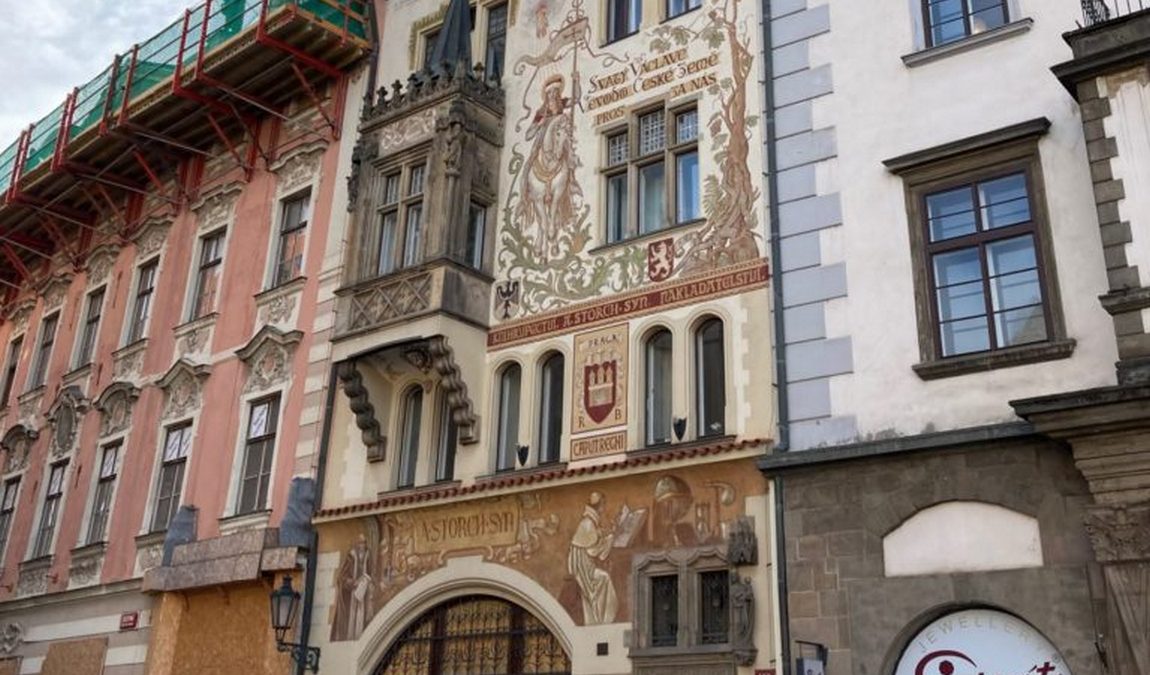 Photo: ourbeautifulprague.com
Photo: ourbeautifulprague.com
The Storch House, with its rich tapestry of Bohemian cultural heritage and architectural splendor, stands as a historical emblem in the heart of Prague's Old Town Square. It spans a timeline that intersects with crucial periods and events from Czech history, reflecting the evolution of a nation through its walls and decor.
Bohemian Origins
With roots deeply embedded in the soil of Bohemia, this site was not always home to the current Storch House. Before its reconstruction in the late 19th century, various houses stood here, including colloquially known as "At the Stone Painting of the Virgin Mary" and "At the Black Gate."
Architectural Evolution
Over the centuries, the structural design of the building on this site has metamorphosed, encapsulating elements from the Gothic, Renaissance, Baroque, and Neo-Renaissance styles. The publisher, Alexandr Štorch, who gave the house its name, upheld this tradition when he preserved the Gothic elements during reconstruction. The building's facade, adorned by a Renaissance-style mural, is a testament to its evolving architectural narrative.
Cultural Significance
Storch House stands as a cultural beacon in Prague, showcasing the magnificent work of Mikoláš Aleš, known for his nationalistic themes. Serving as a reminder of the Czech Republic's artistic legacy, the house is a treasure trove of history with connections to literary figures such as Franz Kafka and the city's vibrant past as a center of publishing and bookselling.
Literary Connections
The intellectual spirit of Prague has brushed the walls of Storch House through its proximity to renowned authors like Franz Werfel, Egon Erwin Kisch, and Max Brod. The amiable environment of the Old Town Square has historically been a crucible for literary dialogue and inspiration.
Historical Events
The Storch House has been a silent witness to pivotal historical events, including the Hussite Wars, the Thirty Years’ War, and the Prague Uprising of 1945. Each of these events has indelibly marked the city's character, with the house nearly lost to flames during the Uprising before its restoration in 1948.
This iconic structure is more than just a domicile; it's a narrative of resilience and the enduring spirit of the Czech people, serving as a family-friendly educative destination in the heart of Prague.
Storch House Details
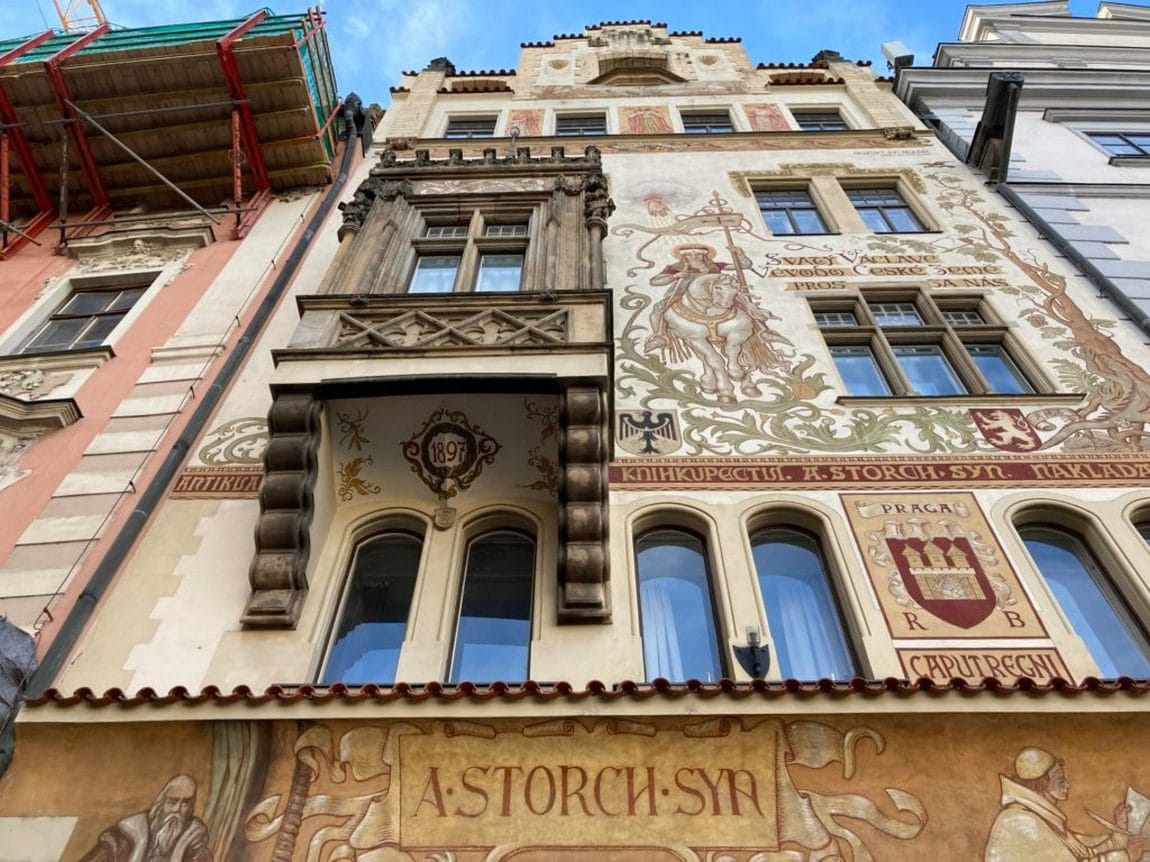 Photo: ourbeautifulprague.com
Photo: ourbeautifulprague.com
The Storch House, also known as Štorchův dům, stands as a beacon of Bohemian artistry and architectural splendor in the heart of Prague’s Old Town Square. This historic building captivates visitors with its remarkable façade and rich cultural heritage, making it an essential stop for families exploring the city's storied past.
Architectural Features
The façade of the Storch House showcases a mixture of Renaissance and Gothic elements, with elaborate plasterwork creating a sense of depth and grandeur. Prominent arches and gables speak to the building's illustrious history. At the same time, the detailed ornamentation provides a window into the craftsmanship of the past.
Artistic Highlights
A visual delight awaits at the Storch House, where the mural of St. Wenceslas on his horse, created by the renowned Czech artist Mikoláš Aleš, takes center stage. This expressive work is complemented by figurative paintings that depict moments of everyday life, offering a glimpse into the cultural narratives of the era.
The building's connection to Bohemian religious and cultural identity is evident through its iconography. The Stone Virgin Mary and scenes featuring biblical figures such as Adam and Eve enrich the historical narrative. At the same time, representations of the Three Magi pay homage to the site's spiritual significance, once home to a Gothic chapel.
The year 1897 is inscribed on the lower section of the bay window, and above it, you'll find the names of the architects responsible for the house's reconstruction: Bedřich Ohmann and Rudolf Krieghammer.
Although the house suffered fire damage during the Prague Uprising in May 1945, it underwent repairs. The bookstore on the ground floor continued to operate for a century.
Preservation Efforts
Preserving the Storch House is paramount, and continuous efforts are made to maintain its architecture and murals. This commitment to safeguarding the house’s artistic and historical integrity allows future generations to cherish this jewel of Prague, bridging the gap between the city's storied past and its vibrant present.
Religious Significance
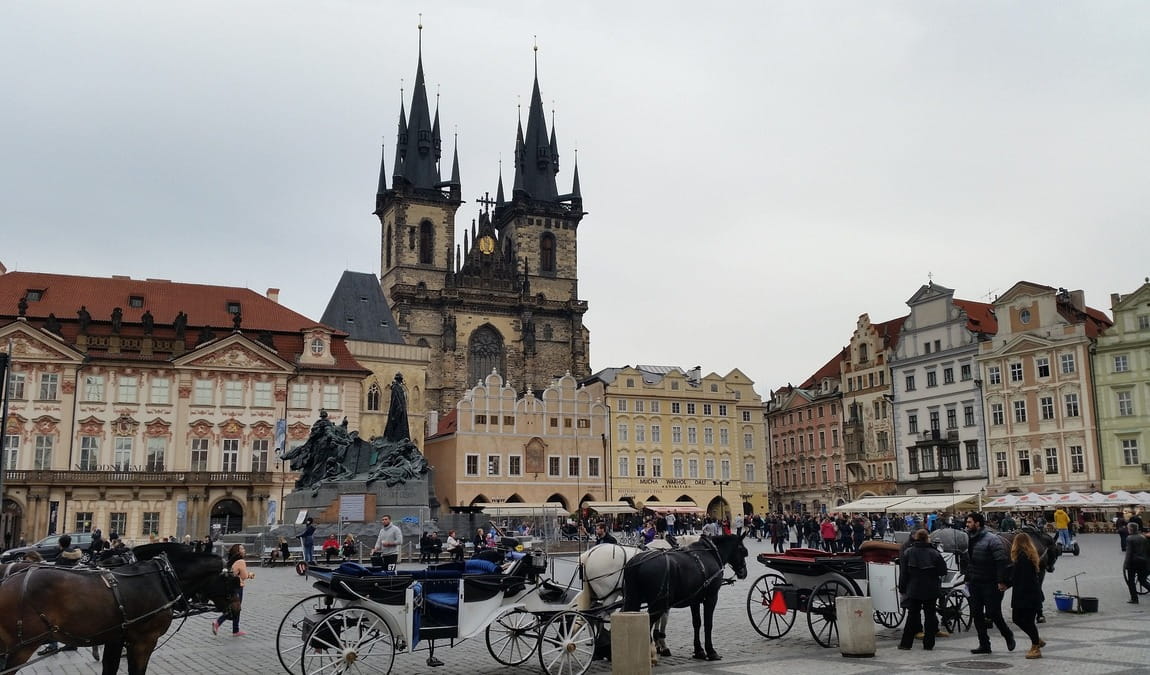 Photo: pixabay.com
Photo: pixabay.com
The Storch House is a stunning example of Neo-Renaissance architecture and a repository of religious history that reflects the rich tapestry of faith woven through Prague's past. As visitors step into its realm, they encounter a world where ecclesiastical influence and devotion are displayed through art and architecture.
Church Influence
Religious structures like the Church of Our Lady before Týn and St. Vitus Cathedral were pivotal in shaping the city's architectural landscape during the Gothic, Medieval, and Renaissance periods. These grand churches were not only places of worship but also exerted significant influence on the surrounding buildings, including the Storch House. Gothic spires and Renaissance facades stand as testaments to this enduring ecclesiastical impact.
Saints and Figures
Prague has always held Saint Wenceslas, the patron saint of Bohemia, in high esteem, as evidenced by his prominence in local iconography. Meanwhile, figures like Adam and Eve have been immortalized in artwork throughout the city, encapsulating essential biblical narratives that echo the religious mindset of the populace. The stone Virgin Mary, once marking the site before the current Storch House, serves as a reminder of the deep Marian devotion that permeates Prague’s historic core.
Religious Artifacts
In sacred art, the Storch House and its vicinity are rich with faith representatives, including depictions of the Three Magi and other biblically significant tableaus. Religious artifacts and iconography were integral to the visual storytelling of the era, reinforcing the narratives of virtue and piety that were central to daily life. The artworks served as expressions of devotion and didactic tools for the faithful.
Best Time to Visit
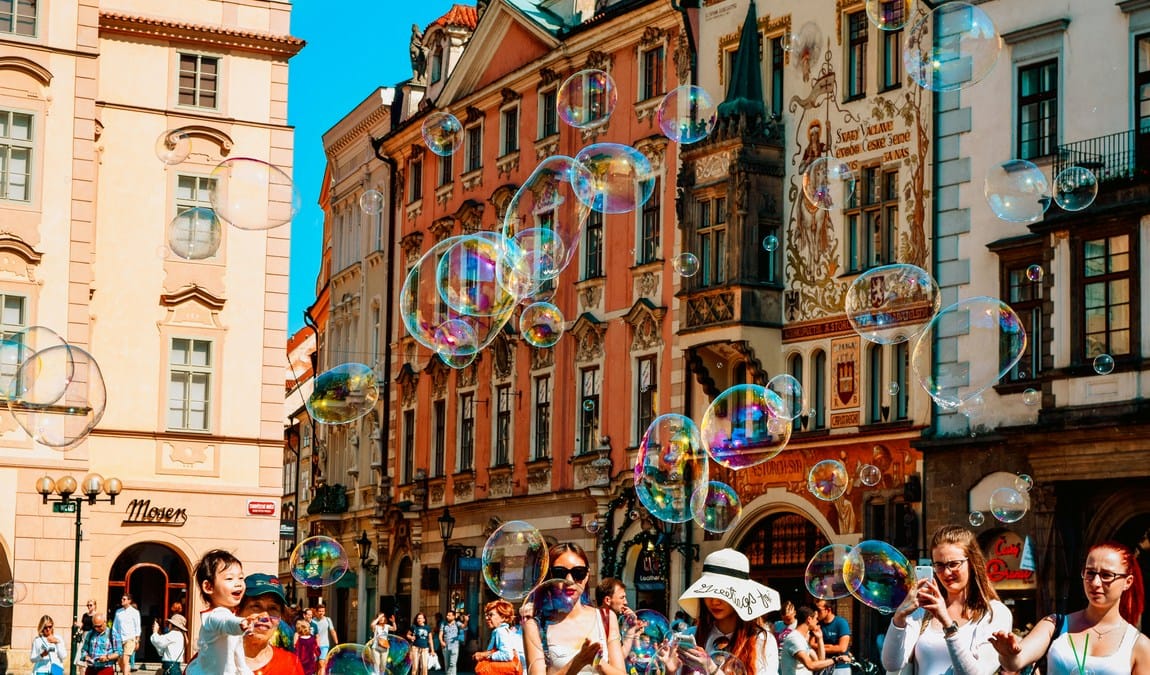 Photo: unsplash.com
Photo: unsplash.com
When planning a visit to Storch House with children, timing is critical to ensuring a pleasant experience for the whole family. Praised for its remarkable painted facade portraying Saint Wenceslas on horseback, the Storch House is a must-see in Prague's Old Town Square. However, this area can become quite bustling.
Spring and Fall Seasons: These months offer mild weather and fewer tourists, creating a more relaxed atmosphere perfect for families. Days are generally warmer, and the evenings cooler.
Summer: During the peak tourist season, it tends to be warm, sunny, and crowded. Visiting early morning or later in the evening can help avoid the busiest times.
Weekdays: A weekday visit is recommended to appreciate the house’s exterior without the weekend crowds.
Morning Hours: For families with children, mornings are often the best time to explore. It's less crowded, and the light is stunning, which makes for enchanting photographs and a peaceful walk.
Here's a quick reference to help plan your visit:
- Season: Spring (March-May), Fall (September-November)
- Day: Weekdays (Monday-Friday)
- Time: Morning hours (before 10 AM)
By following these tips, families can enjoy a more intimate view of the iconic Storch House, undisturbed by the hustle and bustle that comes later in the day.
How Long Does It Take to Attend?
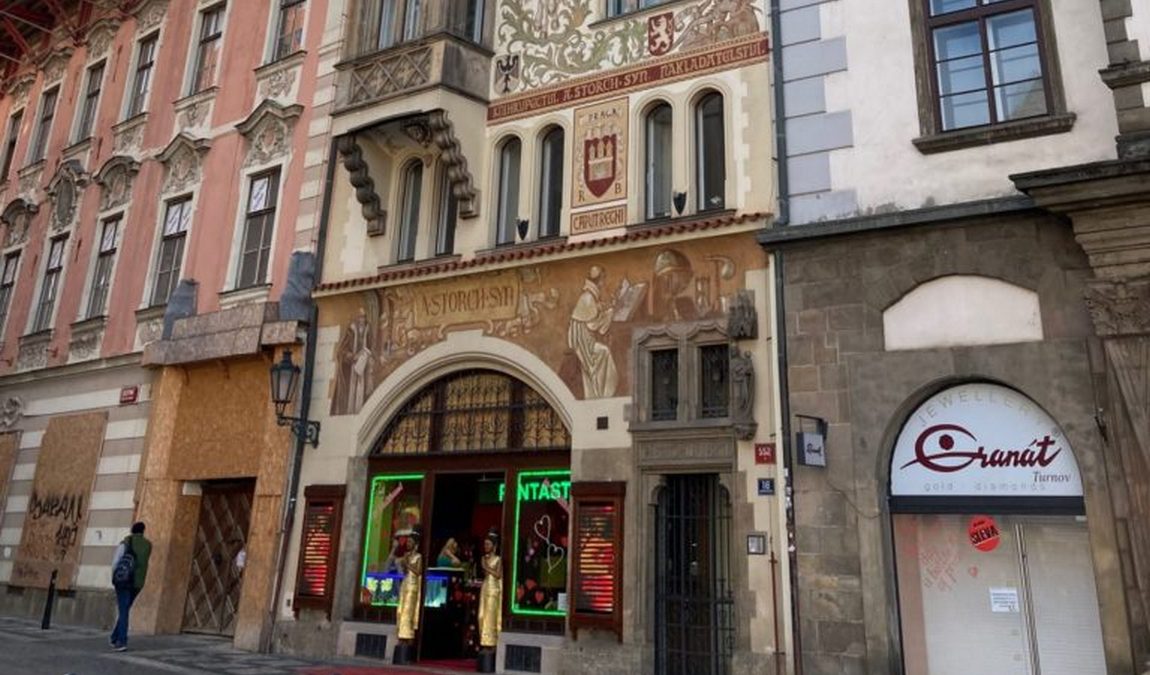
Photo: ourbeautifulprague.com
Visiting the historic Storchuv dum (Storch's House) in Prague's enchanting Old Town Square is an experience that families with children can treasure. A tour of this remarkable site lasts anywhere from 30 minutes to 1 hour, ensuring that even the youngest explorers can enjoy the visit without fatigue.
For families intending to absorb the details of the storied frescoes and architecture, it is recommended to allot:
- 45 minutes for a leisurely walkthrough
- 15 additional minutes for exploration and photos
Visiting Hours:
- Weekdays: 10:00 AM - 6:00 PM
- Weekends: 11:00 AM - 5:00 PM
It is advisable to avoid peak hours from 11:00 AM to 2:00 PM, when crowds usually swell, which might be less comfortable for families with younger children.
Pro Tip: Visit in the morning when the square is quieter, and the light casts a warm glow on the facade, bringing the frescoes to vivid life. Check the official Old Town Square website for any changes in opening times or special events that may affect visit duration.
Remember to factor in some extra time if you're attending during traditional Czech festivals when the square becomes a hive of activity, and the house attracts even more admirers.
Is The Storch House Worth Visiting?
 Photo: unsplash.com
Photo: unsplash.com
When considering a visit to Prague's Old Town Square, families often look for attractions that capture the imagination of adults and children. The Štorchův dům, or Storch House, stands as a historical gem that marries art, history, and whimsy, making it an intriguing spot for family exploration.
Initially built in 1897, the Storch House is not just any historical building; it's a canvas that tells stories. With its remarkable facade graced by a Renaissance-style mural depicting Saint Wenceslas and the three Magi, even the youngest travelers can be captivated by the colorful artwork. For parents and history lovers, learning that the house is named after the publisher Alexandr Štorch and also known as "At the Stone Virgin Mary" adds layers of cultural context to appreciate. The reasons to visit the storch house:
- Visual appeal: A treat for the eyes with its vividly painted exterior.
- Cultural significance: A piece of Prague's rich historical tapestry.
- Accessibility: Centrally located in the bustling Old Town Square.
Strolling through Prague's cobbled lanes to the Old Town Square offers more than just the Storch House. The entire square is a feast of architectural styles, stories etched in stone, and opportunities for children to see history up close. Paired with the enchantment of the medieval Astronomical Clock just a short walk away, the Storch House contributes to an unforgettable day out for the whole family.
The Storch House is worth visiting for its educational value, accessibility, and the joy of encountering Prague's storied past.
Amid the vibrant hustle of the Old Town Square, it remains a splendid stop for families to engage with the city's history interactively and enjoyably. Encourage your little adventurers to ponder the tales behind the murals, and let them discover the delights of Prague's heritage firsthand.


